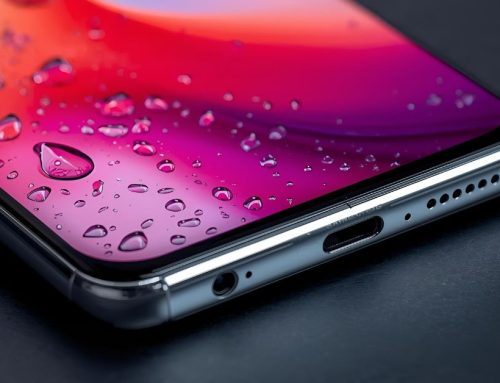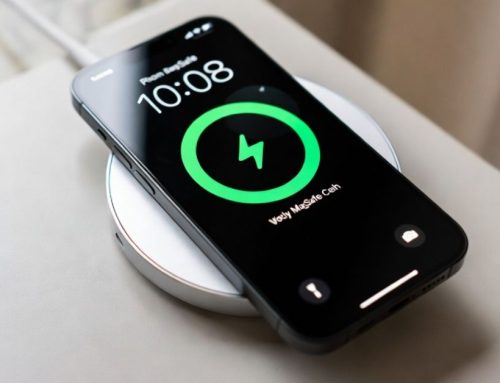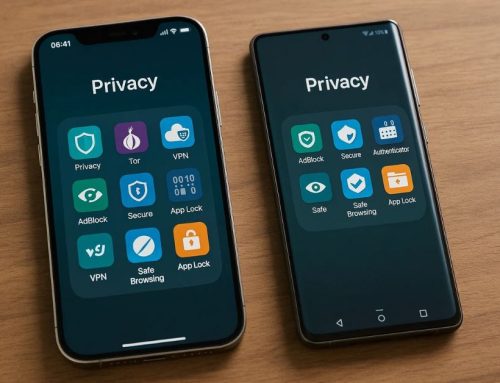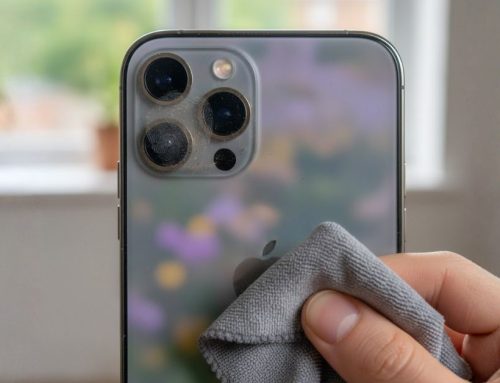You don’t need to factory reset your iPhone to fix persistent network issues. Start by resetting your Network Settings; it’s a quick fix that won’t touch your personal data but will need you to re-enter Wi-Fi passwords. If that doesn’t work, try restarting your iPhone, updating your iOS version for bug fixes, and checking your Wi-Fi connections for strength. Toggling Airplane Mode can also rejuvenate your network connection without a hassle. If the issue persists, reinsert your SIM card or contact your mobile carrier for tailored support. There’s a treasure trove of solutions just a step further, promising to keep your data safe and connectivity smooth.
Reset Network Settings
Resetting your iPhone’s network settings can swiftly solve connectivity issues by reverting network configurations back to their default state, without affecting your personal data such as photos or messages. This step is essential for enhancing performance when you’re facing persistent network problems. By opting to reset, you’re effectively clearing all stored Wi-Fi networks and passwords, alongside any paired Bluetooth devices. This means you’ll need to re-enter Wi-Fi passwords and re-pair Bluetooth devices afterward. Remember, it’s a targeted approach recommended for troubleshooting without risking your valuable data like photos, files, texts, or browsing history. Embracing this method guarantees you tackle network glitches head-on, promoting a smoother, more reliable connection on your device.
Restart Your iPhone
Often, simply restarting your iPhone can fix network issues by rejuvenating the system’s operations. This straightforward measure works by reloading services and clearing the cache, which, in turn, helps the operating system rectify minor software glitches potentially hampering your network connectivity. Depending on the model of your iPhone, the steps to restart it will vary. You’ll need to press and hold the necessary buttons for a specific duration before turning it back on. Remember, restarting your device is a primary troubleshooting step, a precursor to exploring more complex solutions. It’s a simple, yet effective way to guarantee your iPhone’s network capabilities are functioning optimally, without immediately resorting to drastic measures like a factory reset.
Update iOs Version

After restarting your iPhone, the next step to address network issues is to make sure your iOS version is up to date. You’ll need to verify your current iOS version, download the latest update, and confirm that the installation was successful. This process can greatly enhance your iPhone’s network performance and stability.
Checking Current IOS Version
To guarantee your iPhone’s network performance is at its best, begin by checking if you’re running the most recent iOS version in Settings > General > Software Update. Ensuring you’re on the latest iOS is important for resolving persistent network issues, as it often includes fixes for bugs, enhancements in network stability, and overall improvements in device functionality. Regularly updating your iOS ensures your iPhone is equipped with the newest features and essential security patches. This proactive approach is key to maintaining top performance and avoiding the drastic step of a factory reset. By keeping your iOS up to date, you’re taking an essential step in troubleshooting network problems effectively and efficiently, ensuring your device operates smoothly.
Downloading Latest IOS Update
Before delving into the specifics of downloading the latest iOS update, it’s essential you’re connected to a stable Wi-Fi network to ensure a smooth and efficient update process. Updating your iOS version is a pivotal step in resolving persistent network issues, enhancing performance, and correcting bugs that hinder network connectivity. By installing the newest update, you’re not only securing your iPhone with the latest security patches but also ensuring ideal network stability and compatibility with the latest network protocols and carriers. This regular maintenance is vital for addressing signal problems, selection issues, and battery drain due to network search. Ultimately, keeping your iOS up-to-date greatly improves network coverage, signal strength, and overall network performance, positioning you for mastery over your device’s connectivity.
Ensuring Update Installation Success
Having established the importance of downloading the latest iOS update for network stability, let’s confirm you’re all set for a successful installation. To begin with, make sure your iPhone is connected to a stable Wi-Fi network to avoid any interruption during the update process. It’s crucial to check your device’s available storage space because a lack of it can halt the installation. Validate your iPhone supports the latest iOS version to avoid compatibility issues that could arise. Before you start the update, either keep your device plugged in or check that the battery level is sufficient to complete the process. Lastly, keep an eye on the update progress. Addressing errors or issues promptly ensures a smooth installation, paving the way for enhanced network reliability on your iPhone.
Check Wi-Fi Connections

After updating your iPhone’s iOS, it’s essential to evaluate your Wi-Fi connection‘s strength and confirm your router is compatible. Weak signals or incompatible routers can disturb your internet experience. Let’s delve into how to check these aspects to sustain a stable connection on your iPhone.
Wi-Fi Strength Assessment
To assess the quality of your Wi-Fi connection on an iPhone, start by checking the Wi-Fi signal strength indicator located at the top right corner of your screen. This simple, yet effective method provides a quick snapshot of your connection’s importance. A full set of Wi-Fi bars signifies a strong signal, essential for high-speed internet access and seamless online activities. Conversely, fewer bars indicate a weaker connection, often resulting in sluggish internet speeds, dropped connections, and frustrating experiences when trying to load web pages. To mitigate these issues, moving closer to the Wi-Fi router can greatly boost your signal strength, ensuring a more stable and reliable connection. Mastering this fundamental step is key to diagnosing and improving your iPhone’s network performance without resorting to drastic measures.
Router Compatibility Check
Once you’ve assessed your Wi-Fi signal strength, the next step is checking your router’s compatibility with your iPhone to guarantee excellent connectivity. It’s important to make sure your router and iPhone models mesh well for top performance. Explore your router settings and confirm it supports the network type—be it 2.4GHz or 5GHz—that your iPhone connects to seamlessly. Don’t overlook the significance of keeping your router firmware up to date; outdated software can lead to network conflicts with your iPhone. If issues persist, try restarting your router and re-establishing connections. For a thorough analysis, use Wi-Fi analyzer tools to assess signal strength and pinpoint potential interference. Mastering these steps ensures your iPhone stays connected, sidestepping avoidable network hiccups.
Toggle Airplane Mode
Engaging Airplane Mode on your iPhone by toggling it off and on is a straightforward troubleshooting step to refresh your network connections. When you’re faced with persistent network issues, this method can be a quick and efficient solution. Airplane Mode disables all wireless connections, including Wi-Fi, cellular data, and Bluetooth, effectively isolating your device from any network. By doing so, it allows for a network reset without the need for a factory reset, preserving your data and settings. You can easily access Airplane Mode through the Control Center or the Settings app. Simply turning it on will disconnect your iPhone from all networks, and turning it off will reconnect your device, giving you a fresh start with hopefully resolved connectivity issues.
Reinsert SIM Card

If you’re facing persistent network issues on your iPhone, reinserting the SIM card might be the quick fix you need. This straightforward action guarantees that the SIM card maintains proper contact with your device’s hardware, which is essential for a stable network connection. Often, problems such as signal drops, endless network searching, and erratic connectivity issues stem from a misaligned or poorly seated SIM card. By removing and carefully reinserting the SIM card, you’re performing a non-intrusive yet highly effective troubleshooting step. This method stands out as a first-line solution to address network woes before considering the drastic measure of a factory reset. It’s a simple, yet potent tactic in your arsenal for combating network issues, making sure you stay connected without unnecessary complications.
Contact Mobile Carrier
Should you come across persistent network issues on your iPhone, reaching out to your mobile carrier’s customer support can provide a direct path to resolution. Here’s how engaging them can make a significant difference:
- Specific Troubleshooting: They’ll offer steps tailored to their network that might not be widely known, guaranteeing a more targeted approach.
- Outage Information: You’ll find out if there are any current issues or outages affecting your service, preventing you from unnecessary troubleshooting.
- Advanced Diagnostics: With access to sophisticated network tools, they can identify and address the root cause directly.
- Data Preservation: Working with them means potentially resolving issues without losing any personal data, a significant advantage over a factory reset.
Mastering this approach ensures you handle network problems efficiently, keeping your data intact.
Conclusion
In wrapping up, fixing persistent network issues on your iPhone doesn’t always require a factory reset. You’ve got several simpler fixes at your disposal. Begin by resetting network settings and giving your phone a quick restart. Confirm your iOS is up to date and check your Wi-Fi connections. Flipping Airplane Mode on and off, or reinserting your SIM card, can also work wonders. And if all else fails, don’t hesitate to reach out to your mobile carrier for further assistance.






